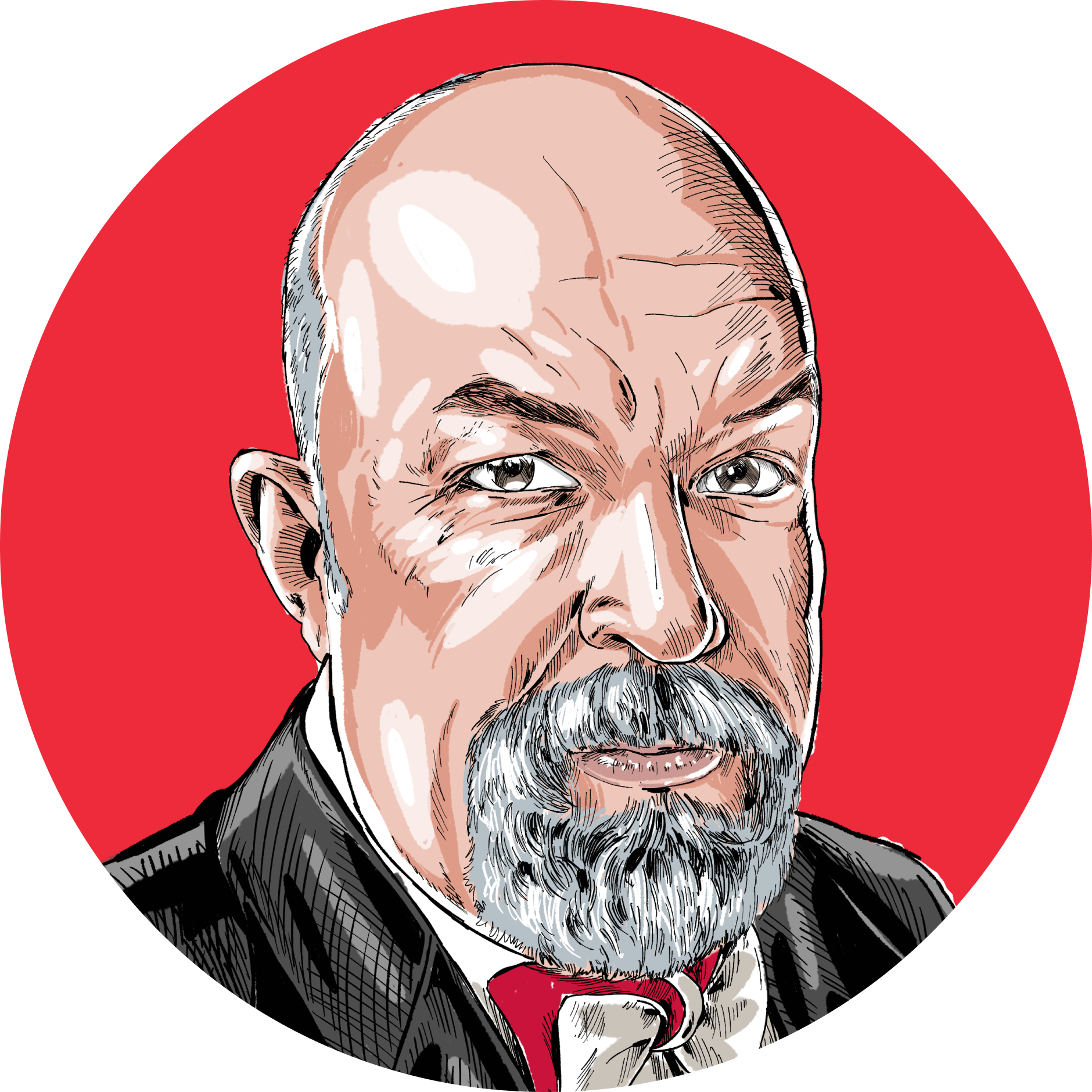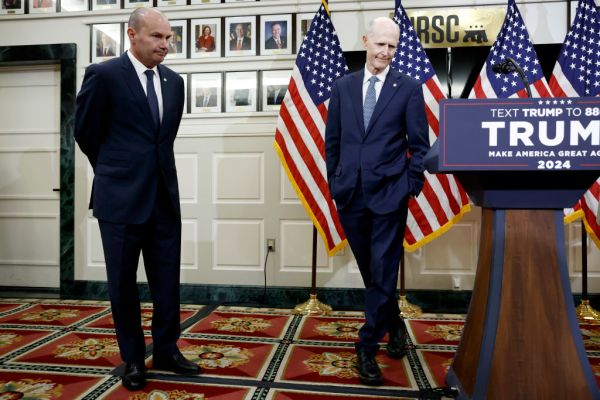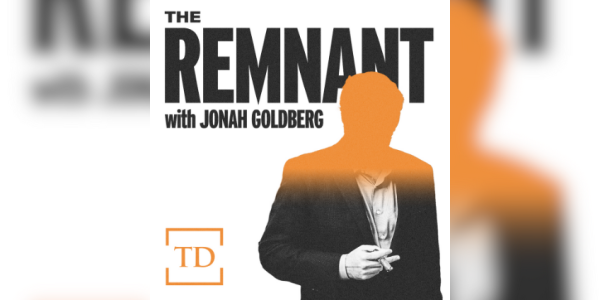The organizers of NatCon 4, the fourth annual conference of the so-called national conservatives, proudly announced Wednesday that they had set a record for attendance at the event—more than 1,000 people.
I don’t mean this as a sneer at NatCon—there are better reasons to sneer at it—but that is not a very big number. To pick a point of comparison with which many of these ladies and gentlemen are strangely obsessed, that is about the size of a very successful National Review cruise—and going on a cruise is a much bigger commitment in terms of time and money. For another point of comparison, consider that that is about 0.7 percent of the typical size of the crowd at ComicCon in San Diego—a crowd that probably would be a good deal bigger if the venue could accommodate more guests.
In the digital age, it is easy for certain kinds of events, movements, and personalities to appear much larger than they actually are. The so-called national conservatives are one such, but the phenomenon is a common one. Finding useful points of comparison can be difficult. For example, Miley Cyrus has about twice as many X (formerly Twitter) followers as U.S. newspapers have combined circulation, but, even though she is a very big celebrity and newspapers have been in long decline, she isn’t a larger cultural presence than all of the nation’s newspapers put together—and we can be confident that if it cost money to follow her on social media, her following would be smaller.
But even apples-to-apples comparisons do not necessarily tell you as much: Vogue, The New Yorker, The Atlantic, GQ, Cosmopolitan, Harper’s Bazaar, Esquire—none of those magazines has as large a circulation as Golf Digest or American Rifleman, but those more widely circulated magazines do not punch proportionally to their weight—even considering that American Rifleman is the house organ of the National Rifle Association, which once was a very important special interest group.
Different numbers will tell you different things: The incoming Labour government in the United Kingdom will enjoy the largest parliamentary majority of any political party in modern British history, but new Prime Minister Keir Starmer’s crew not only won fewer votes than the winner of the last election, it also won fewer votes than the loser of the last election. That record-setting majority is, from that point of view, less a testament to Starmer’s political talent than to Conservative leader Rishi Sunak’s lack of it. Or, looked at another way, it is a testament to the selfishness of Nigel Farage and his Reform UK, a group of supposed conservatives who willfully ensured the investment of power in the left-wing party, apparently a small price to pay to make Farage the right honorable gentleman from Clacton.
Fragmentation benefits the smaller players. In a system with two relevant political parties, Farage has less power than he does in a system with four relevant political parties. In a world with eleventy million cable channels and digital news options, Tucker Carlson was able to become a genuine national phenomenon with a Fox News show that reached only around 2 million viewers in a nation of 325 million, meaning that well under 1 percent of Americans were watching his show on any given night. For comparison, the majority of U.S. households—60 percent—tuned in for the last episode of M*A*S*H, the only non-Super Bowl broadcast to break the top 20.
But fragmentation explains only so much. M*A*S*H had its run in a very different media environment from today’s. In our own time, reruns of old sitcoms such as The Big Bang Theory routinely outperform the hottest thing on cable news on any given night. The web traffic of the New York Times is a fraction of that of the largest pornographic sites. Stated preferences are, predictably, at odds with revealed preferences—and with revealed priorities. That isn’t new, either. The number of people who voted in the 1992 presidential election (a little more than 100 million) wasn’t a hell of a lot more than the number who watched the Cheers finale in 1993 (about 80 million). Bill Clinton’s star may have fallen in this century, but, with apologies to my old friend Rob Long, he’ll still get more pages in the history books than Cheers will.
Some years ago—it was long enough ago that Keith Olbermann was still a big deal—I saw a survey asking Americans for their views about different political media personalities and pundits. With the sole exception of Rush Limbaugh (another indication of the era in question) the No. 1 answer in every case was: Never heard of him. All those people who seemed like Very Big Deals if you went to college and watched a lot of cable news were, in the grand scheme, relatively obscure. There’s a story Jay Nordlinger relates about William F. Buckley Jr. meeting an airline clerk in Grenada who vaguely recognized him and asked him why he was famous. “Madame,” he answered, “I am a rock and roll star.”
(As Jay points out, he gave himself away with the fuddy-duddyish “rock and roll star” rather than the more correct “rock star.”)
Partly I mean these observations as a reminder not to get buffaloed by events and personalities who blow up on social media or in similar venues and seem more significant than they are. But this also is a reminder of the importance of institution-building and doing the hard work of refining the big ideas: Figures such as Buckley may rapidly disappear from the public consciousness when their careers or lives have concluded—ask the man on the street in Edinburgh who Adam Smith was and prepare to receive a blank stare—but they left behind legacies that will outlive their personal reputations and celebrity. Scholars who spend their careers cataloging and annotating the works and lives of relatively obscure figures may seem to be laboring in vain—especially if your idea of a meaningful career is selling doggie vitamins on talk radio—but, like the Irish monks of a millennium ago, they are doing the necessary work of civilization. My friend and colleague Jonah Goldberg recently did a very interesting podcast episode with Luke Burgis, a scholar of René Girard, and while I am sure that Burgis was very grateful that his book on Girard was named the Financial Times Business Book of the Month, neither that kind of accolade nor the typically modest sales of such works tell us much about the importance of such a book—because its importance is not a matter of the last five minutes or the next five minutes.
One of the choices we all have in life is: Which timeline do I want to live on? NatCon 4 might seem like a modestly big deal on a particular Wednesday, or maybe even a week hence. “Literature is news that stays news,” Ezra Pound wrote. History, too. The trick is being able to tell what is big news and what is only current events.









Please note that we at The Dispatch hold ourselves, our work, and our commenters to a higher standard than other places on the internet. We welcome comments that foster genuine debate or discussion—including comments critical of us or our work—but responses that include ad hominem attacks on fellow Dispatch members or are intended to stoke fear and anger may be moderated.